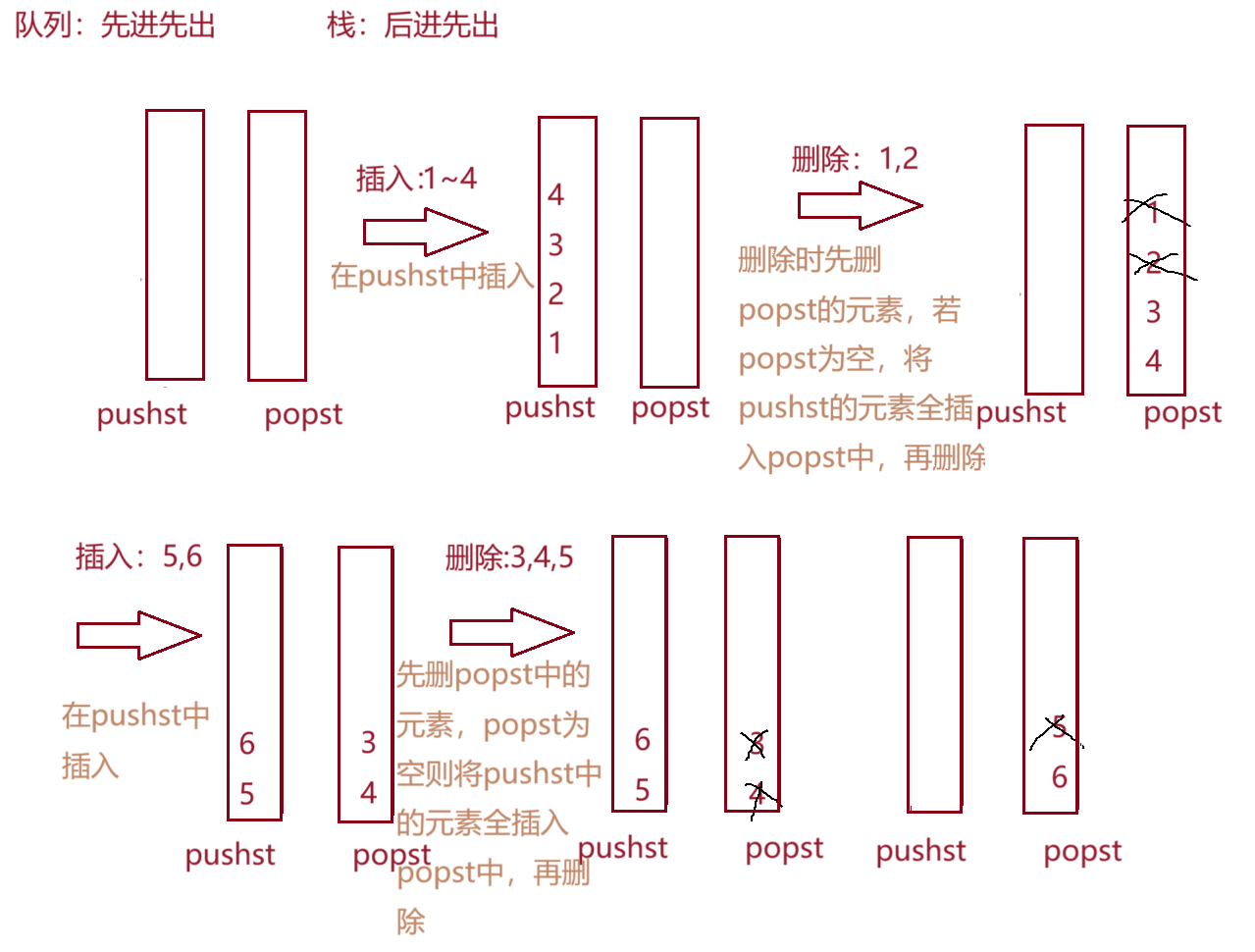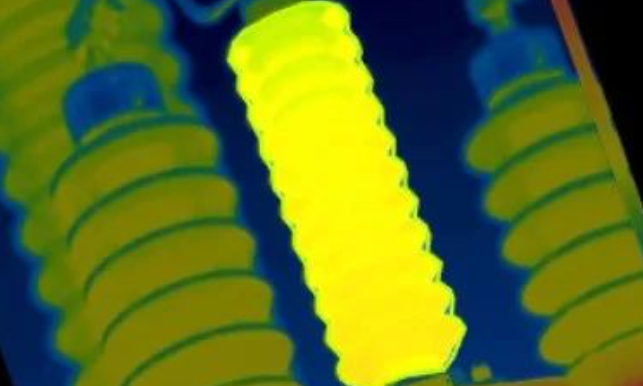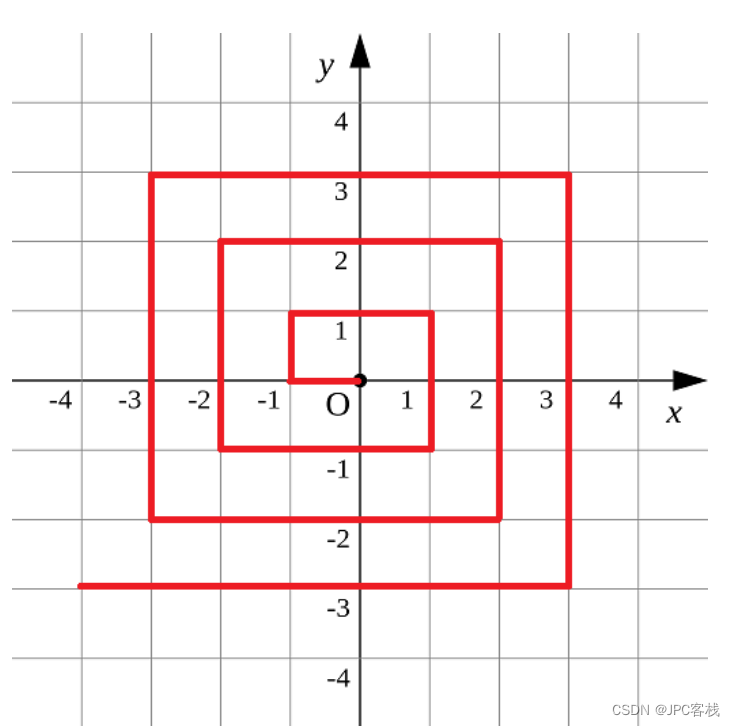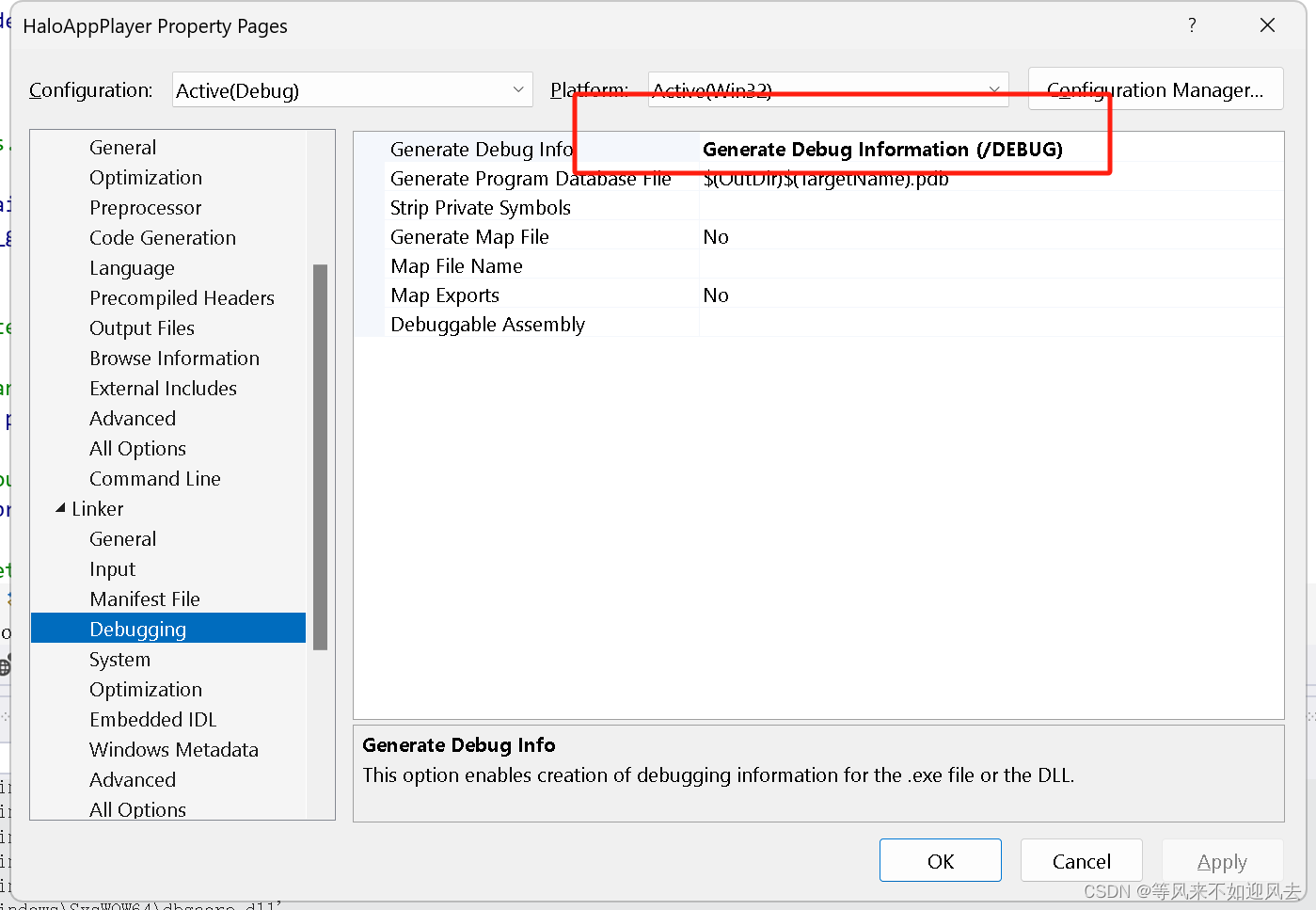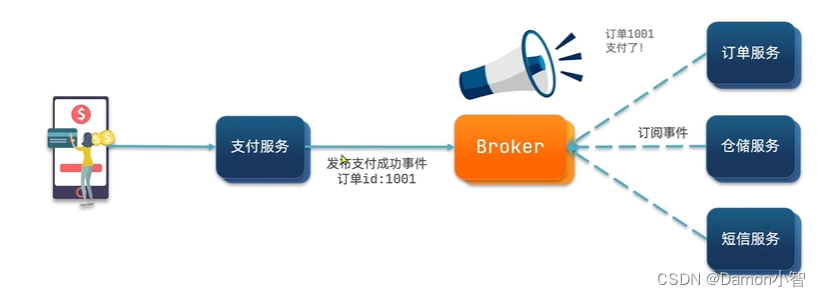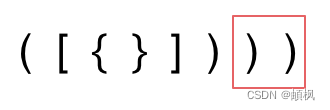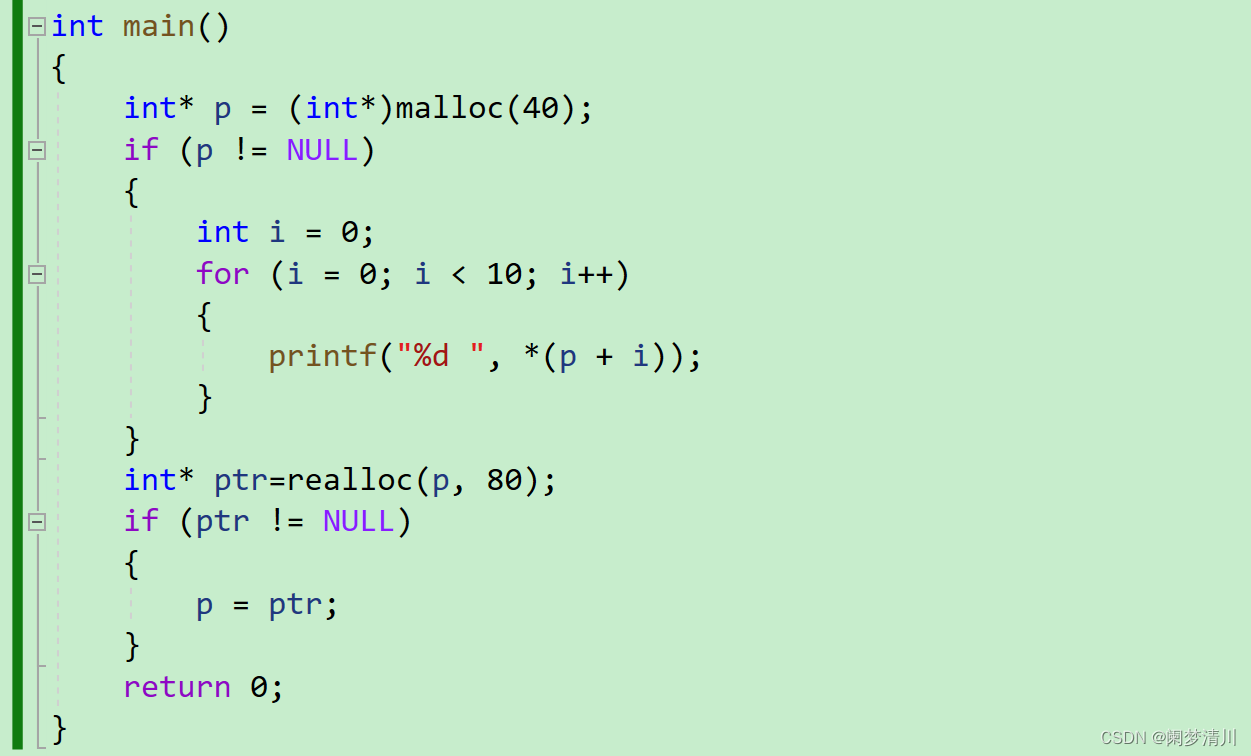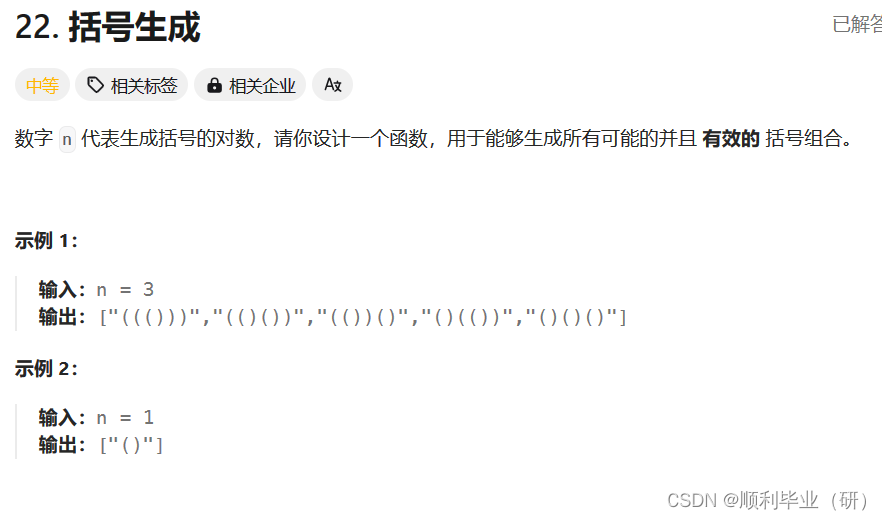文章目录
- 一、简介
- 二、SLIST单向无尾链表
- 2.1 介绍
- 2.2 操作
- 2.3 例子
- 三、STAILQ单向有尾链表
- 四、LIST双向无尾链表
- 五、TAILQ双向有尾链表
- 六、CIRCLEQ循环链表
- 七、queue源码
- 参考
一、简介
queue.h是一个非常经典的文件,定义了一系列宏的操作,它定义了一系列的宏操作,实现了链表,尾队列和循环链表。
queue.h定义了5个基本的数据类型:
- 单向无尾链表
- 单向有尾链表
- 双向无尾链表
- 双向有尾链表
- 循环链表
queue相关链表/队列的使用流程为:
- 定义自己的结构体
- 在结构体中使用XXXX_ENTRY定义链表/队列成员变量
- 使用XXXX_HEAD定义一个链表/队列头
- 使用XXXX_INIT初始化链表/队列头(也可在定义时初始化)
- 使用相关的INSERT、REMOVE、FOREACH、REPLACE方法操作队列
几种类型支持的操作:

二、SLIST单向无尾链表
2.1 介绍
SLIST是Singly-linked List的缩写,意为单向无尾链表。

SLIST适合数据量非常大并且几乎不需要删除数据的场合,或者当作堆栈使用。
SLIST相关的源码:
/*
* Singly-linked List definitions.
*/
#define SLIST_HEAD(name, type) \
struct name { \
struct type *slh_first; /* first element */ \
}
#define SLIST_HEAD_INITIALIZER(head) \
{ NULL }
#define SLIST_ENTRY(type) \
struct { \
struct type *sle_next; /* next element */ \
}
/*
* Singly-linked List functions.
*/
#define SLIST_INIT(head) do { \
(head)->slh_first = NULL; \
} while (/*CONSTCOND*/0)
#define SLIST_INSERT_AFTER(slistelm, elm, field) do { \
(elm)->field.sle_next = (slistelm)->field.sle_next; \
(slistelm)->field.sle_next = (elm); \
} while (/*CONSTCOND*/0)
#define SLIST_INSERT_HEAD(head, elm, field) do { \
(elm)->field.sle_next = (head)->slh_first; \
(head)->slh_first = (elm); \
} while (/*CONSTCOND*/0)
#define SLIST_REMOVE_HEAD(head, field) do { \
(head)->slh_first = (head)->slh_first->field.sle_next; \
} while (/*CONSTCOND*/0)
#define SLIST_REMOVE(head, elm, type, field) do { \
if ((head)->slh_first == (elm)) { \
SLIST_REMOVE_HEAD((head), field); \
} \
else { \
struct type *curelm = (head)->slh_first; \
while(curelm->field.sle_next != (elm)) \
curelm = curelm->field.sle_next; \
curelm->field.sle_next = \
curelm->field.sle_next->field.sle_next; \
} \
} while (/*CONSTCOND*/0)
#define SLIST_FOREACH(var, head, field) \
for ((var) = SLIST_FIRST((head)); \
(var); \
(var) = SLIST_NEXT((var), field) )
#define SLIST_FOREACH_PREVPTR(var, varp, head, field) \
for ((varp) = &SLIST_FIRST((head)); \
((var) = *(varp)) != NULL; \
(varp) = &SLIST_NEXT((var), field) )
/*
* Singly-linked List access methods.
*/
#define SLIST_EMPTY(head) ((head)->slh_first == NULL)
#define SLIST_FIRST(head) ((head)->slh_first)
#define SLIST_NEXT(elm, field) ((elm)->field.sle_next)
2.2 操作
与单向链表相关的宏、方法和函数有:
// definitions
SLIST_HEAD(name, type)
SLIST_HEAD_INITIALIZER(head)
SLIST_ENTRY(type)
// access methods
SLIST_FIRST(head)
SLIST_END(head)
SLIST_EMPTY(head)
SLIST_NEXT(elm, field)
LIST_FOREACH(var, head, field)
SLIST_FOREACH_PREVPTR(var, varp, head, field)
// functions
SLIST_INIT(head)
SLIST_INSERT_AFTER(slistelm, elm, field)
SLIST_INSERT_HEAD(head, elm, field)
SLIST_REMOVE_NEXT(head, elm, field)
SLIST_REMOVE_HEAD(head, field)
SLIST_REMOVE(head, elm, type, field)
宏定义说明
- SLIST_HEAD用于定义一个单向链表数据结构体的头变量,该结构体只有一个指针成员slh_first,指向第一个type类型的数据结构;name可以不用(填写);
- SLIST_HEAD_INITIALIZER用于在定义时初始化SLIST_HEAD定义的数据结构体的头变量;head可以不用填写;
- SLIST_ENTRY则用于定义一个(用户)结构体的成员变量,该成员变量只包含一个指向type类型的指针sle_next;
与单向链表相关的访问方法有6个
- SLIST_FIRST用于获取单向链表的第一个元素;
- SLIST_END定义了尾部的判断标准;
- SLIST_EMPTY用于判断单向链表是否为空:空则返回true,否则返回false;
- SLIST_NEXT用于获取elm元素的下一个元素,field是前面用SLIST_ENTRY定义的成员变量名;
- SLIST_FOREACH用于遍历单向链表,var是临时变量,head是链表头指针(SLIST_HEAD定义的变量),field是SLIST_ENTRY定义的成员变量名;
- SLIST_FOREACH_PREVPTR与SLIST_FOREACH类似,用于遍历单向链表,不过提供更多的一个临时指针变量varp,指向var指向元素的地址;
与单向链表相关的函数有6个
- SLIST_INIT用于初始化SLIST_HEAD定义的头指针变量;当然也可以在使用SLIST_HEAD定义头指针变量时同时使用SLIST_HEAD_INITIALIZER进行初始化;
- SLIST_INSERT_AFTER用于将元素elm插入到当前链表元素slistelm的后面;
- SLIST_INSERT_HEAD用于将元素elm插入到当前链表head的头部;head是SLIST_HEAD定义的链表头指针;
- SLIST_REMOVE_NEXT用于将elm后面的元素删除,head未使用;注意删除时判断elm后面是否还有元素,否则会崩溃;
- SLIST_REMOVE_HEAD用于删除第一个元素;注意删除时判断head是否为空,否则会崩溃;
- SLIST_REMOVE用于从head链表中删除elm元素;注意首先判断elm元素是否在head链表中,否则会崩溃;
2.3 例子
#include <stdio.h>
#include <stdlib.h>
#include "queue.h"
struct SLIST_ITEM {
int value;
SLIST_ENTRY(SLIST_ITEM) entry;
};
int main(void) {
int i;
SLIST_HEAD(,SLIST_ITEM) slist_head;
SLIST_INIT(&slist_head);
if (SLIST_EMPTY(&slist_head))
printf("single list is empty\n");
struct SLIST_ITEM *item;
struct SLIST_ITEM *item_temp;
for( i = 0; i < 10; i += 1)
{
item = (struct SLIST_ITEM *)malloc(sizeof(struct SLIST_ITEM));
item->value = i;
item->entry.sle_next = NULL;
SLIST_INSERT_HEAD(&slist_head, item, entry);
}
printf("after insert 10 item to single list:\n");
SLIST_FOREACH(item, &slist_head, entry)
printf("item value = %d\n", item->value);
while( SLIST_EMPTY(&slist_head) == 0 ){
item_temp = (&slist_head)->slh_first;
SLIST_REMOVE(&slist_head,(&slist_head)->slh_first,SLIST_ITEM,entry);
free(item_temp);
}
printf("here");
if ( SLIST_EMPTY(&slist_head) )
printf("single list is empty\n");
return 0;
}

- SLIST_INSERT_HEAD(&slist_head, item, entry)
从头部插入元素,第一个参数为头节点,第一个参数为要插入的元素,第三个参数为自定义结构体中,自定义的SLIST_ENTRY(SLIST_ITEM)结构体变量名称。 - SLIST_REMOVE(&slist_head,(&slist_head)->slh_first,SLIST_ITEM,entry)
删除对应元素( 内部仅是指针指向的改变,没有真正释放空间 )
三、STAILQ单向有尾链表
STAILQ 是 Singly-linked Tail queue 的缩写,意为单向有尾链表。有尾链表可作队列使用。

STAILQ相关的源码
/*
* Singly-linked Tail queue declarations.
*/
#define STAILQ_HEAD(name, type) \
struct name { \
struct type *stqh_first; /* first element */ \
struct type **stqh_last; /* addr of last next element */ \
}
#define STAILQ_HEAD_INITIALIZER(head) \
{ NULL, &(head).stqh_first }
#define STAILQ_ENTRY(type) \
struct { \
struct type *stqe_next; /* next element */ \
}
/*
* Singly-linked Tail queue functions.
*/
#define STAILQ_INIT(head) do { \
(head)->stqh_first = NULL; \
(head)->stqh_last = &(head)->stqh_first; \
} while (/*CONSTCOND*/0)
#define STAILQ_INSERT_HEAD(head, elm, field) do { \
if (((elm)->field.stqe_next = (head)->stqh_first) == NULL) \
(head)->stqh_last = &(elm)->field.stqe_next; \
(head)->stqh_first = (elm); \
} while (/*CONSTCOND*/0)
#define STAILQ_INSERT_TAIL(head, elm, field) do { \
(elm)->field.stqe_next = NULL; \
*(head)->stqh_last = (elm); \
(head)->stqh_last = &(elm)->field.stqe_next; \
} while (/*CONSTCOND*/0)
#define STAILQ_INSERT_AFTER(head, listelm, elm, field) do { \
if (((elm)->field.stqe_next = (listelm)->field.stqe_next) == NULL) \
(head)->stqh_last = &(elm)->field.stqe_next; \
(listelm)->field.stqe_next = (elm); \
} while (/*CONSTCOND*/0)
#define STAILQ_REMOVE_HEAD(head, field) do { \
if (((head)->stqh_first = (head)->stqh_first->field.stqe_next) == NULL) \
(head)->stqh_last = &(head)->stqh_first; \
} while (/*CONSTCOND*/0)
#define STAILQ_REMOVE(head, elm, type, field) do { \
if ((head)->stqh_first == (elm)) { \
STAILQ_REMOVE_HEAD((head), field); \
} else { \
struct type *curelm = (head)->stqh_first; \
while (curelm->field.stqe_next != (elm)) \
curelm = curelm->field.stqe_next; \
if ((curelm->field.stqe_next = \
curelm->field.stqe_next->field.stqe_next) == NULL) \
(head)->stqh_last = &(curelm)->field.stqe_next; \
} \
} while (/*CONSTCOND*/0)
#define STAILQ_FOREACH(var, head, field) \
for ((var) = ((head)->stqh_first); \
(var); \
(var) = ((var)->field.stqe_next))
#define STAILQ_CONCAT(head1, head2) do { \
if (!STAILQ_EMPTY((head2))) { \
*(head1)->stqh_last = (head2)->stqh_first; \
(head1)->stqh_last = (head2)->stqh_last; \
STAILQ_INIT((head2)); \
} \
} while (/*CONSTCOND*/0)
/*
* Singly-linked Tail queue access methods.
*/
#define STAILQ_EMPTY(head) ((head)->stqh_first == NULL)
#define STAILQ_FIRST(head) ((head)->stqh_first)
#define STAILQ_NEXT(elm, field) ((elm)->field.stqe_next)
四、LIST双向无尾链表
双向链表有前向的指针,因此可以执行一些前向操作,而且无需遍历链表便可以删除一些节点。

LIST相关的源码
/*
* List definitions.
*/
#define LIST_HEAD(name, type) \
struct name { \
struct type *lh_first; /* first element */ \
}
#define LIST_HEAD_INITIALIZER(head) \
{ NULL }
#define LIST_ENTRY(type) \
struct { \
struct type *le_next; /* next element */ \
struct type **le_prev; /* address of previous next element */ \
}
/*
* List functions.
*/
#define LIST_INIT(head) do { \
(head)->lh_first = NULL; \
} while (/*CONSTCOND*/0)
#define LIST_INSERT_AFTER(listelm, elm, field) do { \
if (((elm)->field.le_next = (listelm)->field.le_next) != NULL) \
(listelm)->field.le_next->field.le_prev = \
&(elm)->field.le_next; \
(listelm)->field.le_next = (elm); \
(elm)->field.le_prev = &(listelm)->field.le_next; \
} while (/*CONSTCOND*/0)
#define LIST_INSERT_BEFORE(listelm, elm, field) do { \
(elm)->field.le_prev = (listelm)->field.le_prev; \
(elm)->field.le_next = (listelm); \
*(listelm)->field.le_prev = (elm); \
(listelm)->field.le_prev = &(elm)->field.le_next; \
} while (/*CONSTCOND*/0)
#define LIST_INSERT_HEAD(head, elm, field) do { \
if (((elm)->field.le_next = (head)->lh_first) != NULL) \
(head)->lh_first->field.le_prev = &(elm)->field.le_next; \
(head)->lh_first = (elm); \
(elm)->field.le_prev = &(head)->lh_first; \
} while (/*CONSTCOND*/0)
#define LIST_REMOVE(elm, field) do { \
if ((elm)->field.le_next != NULL) \
(elm)->field.le_next->field.le_prev = \
(elm)->field.le_prev; \
*(elm)->field.le_prev = (elm)->field.le_next; \
} while (/*CONSTCOND*/0)
#define LIST_FOREACH(var, head, field) \
for ((var) = ((head)->lh_first); \
(var); \
(var) = ((var)->field.le_next))
/*
* List access methods.
*/
#define LIST_EMPTY(head) ((head)->lh_first == NULL)
#define LIST_FIRST(head) ((head)->lh_first)
#define LIST_NEXT(elm, field) ((elm)->field.le_next)
五、TAILQ双向有尾链表
TAILQ 是 Tail queue 的缩写,意为双向有尾链表。
有尾链表可作队列使用。
双向有尾链表兼具了双向链表和有尾链表的特点。

TAILQ相关的源码
/*
* Tail queue definitions.
*/
#define TAILQ_HEAD(name, type) \
struct name { \
struct type *tqh_first; /* first element */ \
struct type **tqh_last; /* addr of last next element */ \
}
#define TAILQ_HEAD_INITIALIZER(head) \
{ NULL, &(head).tqh_first }
#define TAILQ_ENTRY(type) \
struct { \
struct type *tqe_next; /* next element */ \
struct type **tqe_prev; /* address of previous next element */ \
}
/*
* Tail queue functions.
*/
#define TAILQ_INIT(head) do { \
(head)->tqh_first = NULL; \
(head)->tqh_last = &(head)->tqh_first; \
} while (/*CONSTCOND*/0)
#define TAILQ_INSERT_HEAD(head, elm, field) do { \
if (((elm)->field.tqe_next = (head)->tqh_first) != NULL) \
(head)->tqh_first->field.tqe_prev = &(elm)->field.tqe_next; \
else \
(head)->tqh_last = &(elm)->field.tqe_next; \
(head)->tqh_first = (elm); \
(elm)->field.tqe_prev = &(head)->tqh_first; \
} while (/*CONSTCOND*/0)
#define TAILQ_INSERT_TAIL(head, elm, field) do { \
(elm)->field.tqe_next = NULL; \
(elm)->field.tqe_prev = (head)->tqh_last; \
*(head)->tqh_last = (elm); \
(head)->tqh_last = &(elm)->field.tqe_next; \
} while (/*CONSTCOND*/0)
#define TAILQ_INSERT_AFTER(head, listelm, elm, field) do { \
if (((elm)->field.tqe_next = (listelm)->field.tqe_next) != NULL) \
(elm)->field.tqe_next->field.tqe_prev = &(elm)->field.tqe_next; \
else \
(head)->tqh_last = &(elm)->field.tqe_next; \
(listelm)->field.tqe_next = (elm); \
(elm)->field.tqe_prev = &(listelm)->field.tqe_next; \
} while (/*CONSTCOND*/0)
#define TAILQ_INSERT_BEFORE(listelm, elm, field) do { \
(elm)->field.tqe_prev = (listelm)->field.tqe_prev; \
(elm)->field.tqe_next = (listelm); \
*(listelm)->field.tqe_prev = (elm); \
(listelm)->field.tqe_prev = &(elm)->field.tqe_next; \
} while (/*CONSTCOND*/0)
#define TAILQ_REMOVE(head, elm, field) do { \
if (((elm)->field.tqe_next) != NULL) \
(elm)->field.tqe_next->field.tqe_prev = (elm)->field.tqe_prev; \
else \
(head)->tqh_last = (elm)->field.tqe_prev; \
*(elm)->field.tqe_prev = (elm)->field.tqe_next; \
} while (/*CONSTCOND*/0)
#define TAILQ_FOREACH(var, head, field) \
for ((var) = ((head)->tqh_first); \
(var); \
(var) = ((var)->field.tqe_next))
#define TAILQ_FOREACH_REVERSE(var, head, headname, field) \
for ((var) = (*(((struct headname *)((head)->tqh_last))->tqh_last)); \
(var); \
(var) = (*(((struct headname *)((var)->field.tqe_prev))->tqh_last)))
#define TAILQ_CONCAT(head1, head2, field) do { \
if (!TAILQ_EMPTY(head2)) { \
*(head1)->tqh_last = (head2)->tqh_first; \
(head2)->tqh_first->field.tqe_prev = (head1)->tqh_last; \
(head1)->tqh_last = (head2)->tqh_last; \
TAILQ_INIT((head2)); \
} \
} while (/*CONSTCOND*/0)
/*
* Tail queue access methods.
*/
#define TAILQ_EMPTY(head) ((head)->tqh_first == NULL)
#define TAILQ_FIRST(head) ((head)->tqh_first)
#define TAILQ_NEXT(elm, field) ((elm)->field.tqe_next)
#define TAILQ_LAST(head, headname) \
(*(((struct headname *)((head)->tqh_last))->tqh_last))
#define TAILQ_PREV(elm, headname, field) \
(*(((struct headname *)((elm)->field.tqe_prev))->tqh_last))
六、CIRCLEQ循环链表
CIRCLEQ 是 Circular queue 的缩写,意为循环链表。

CIRCLEQ相关的源码
/*
* Circular queue definitions.
*/
#define CIRCLEQ_HEAD(name, type) \
struct name { \
struct type *cqh_first; /* first element */ \
struct type *cqh_last; /* last element */ \
}
#define CIRCLEQ_HEAD_INITIALIZER(head) \
{ (void *)&head, (void *)&head }
#define CIRCLEQ_ENTRY(type) \
struct { \
struct type *cqe_next; /* next element */ \
struct type *cqe_prev; /* previous element */ \
}
/*
* Circular queue functions.
*/
#define CIRCLEQ_INIT(head) do { \
(head)->cqh_first = (void *)(head); \
(head)->cqh_last = (void *)(head); \
} while (/*CONSTCOND*/0)
#define CIRCLEQ_INSERT_AFTER(head, listelm, elm, field) do { \
(elm)->field.cqe_next = (listelm)->field.cqe_next; \
(elm)->field.cqe_prev = (listelm); \
if ((listelm)->field.cqe_next == (void *)(head)) \
(head)->cqh_last = (elm); \
else \
(listelm)->field.cqe_next->field.cqe_prev = (elm); \
(listelm)->field.cqe_next = (elm); \
} while (/*CONSTCOND*/0)
#define CIRCLEQ_INSERT_BEFORE(head, listelm, elm, field) do { \
(elm)->field.cqe_next = (listelm); \
(elm)->field.cqe_prev = (listelm)->field.cqe_prev; \
if ((listelm)->field.cqe_prev == (void *)(head)) \
(head)->cqh_first = (elm); \
else \
(listelm)->field.cqe_prev->field.cqe_next = (elm); \
(listelm)->field.cqe_prev = (elm); \
} while (/*CONSTCOND*/0)
#define CIRCLEQ_INSERT_HEAD(head, elm, field) do { \
(elm)->field.cqe_next = (head)->cqh_first; \
(elm)->field.cqe_prev = (void *)(head); \
if ((head)->cqh_last == (void *)(head)) \
(head)->cqh_last = (elm); \
else \
(head)->cqh_first->field.cqe_prev = (elm); \
(head)->cqh_first = (elm); \
} while (/*CONSTCOND*/0)
#define CIRCLEQ_INSERT_TAIL(head, elm, field) do { \
(elm)->field.cqe_next = (void *)(head); \
(elm)->field.cqe_prev = (head)->cqh_last; \
if ((head)->cqh_first == (void *)(head)) \
(head)->cqh_first = (elm); \
else \
(head)->cqh_last->field.cqe_next = (elm); \
(head)->cqh_last = (elm); \
} while (/*CONSTCOND*/0)
#define CIRCLEQ_REMOVE(head, elm, field) do { \
if ((elm)->field.cqe_next == (void *)(head)) \
(head)->cqh_last = (elm)->field.cqe_prev; \
else \
(elm)->field.cqe_next->field.cqe_prev = (elm)->field.cqe_prev; \
if ((elm)->field.cqe_prev == (void *)(head)) \
(head)->cqh_first = (elm)->field.cqe_next; \
else \
(elm)->field.cqe_prev->field.cqe_next = (elm)->field.cqe_next; \
} while (/*CONSTCOND*/0)
#define CIRCLEQ_FOREACH(var, head, field) \
for ((var) = ((head)->cqh_first); \
(var) != (const void *)(head); \
(var) = ((var)->field.cqe_next))
#define CIRCLEQ_FOREACH_REVERSE(var, head, field) \
for ((var) = ((head)->cqh_last); \
(var) != (const void *)(head); \
(var) = ((var)->field.cqe_prev))
/*
* Circular queue access methods.
*/
#define CIRCLEQ_EMPTY(head) ((head)->cqh_first == (void *)(head))
#define CIRCLEQ_FIRST(head) ((head)->cqh_first)
#define CIRCLEQ_LAST(head) ((head)->cqh_last)
#define CIRCLEQ_NEXT(elm, field) ((elm)->field.cqe_next)
#define CIRCLEQ_PREV(elm, field) ((elm)->field.cqe_prev)
#define CIRCLEQ_LOOP_NEXT(head, elm, field) \
(((elm)->field.cqe_next == (void *)(head)) \
? ((head)->cqh_first) \
: (elm->field.cqe_next))
#define CIRCLEQ_LOOP_PREV(head, elm, field) \
(((elm)->field.cqe_prev == (void *)(head)) \
? ((head)->cqh_last) \
: (elm->field.cqe_prev))
七、queue源码
在Linux系统中的路径为:/usr/include/sys/queue.h
也可以通过如下网址查看:https://codebrowser.dev/glibc/glibc/misc/sys/queue.h.html
queue.h
/*
* Copyright (c) 1991, 1993
* The Regents of the University of California. All rights reserved.
*
* Redistribution and use in source and binary forms, with or without
* modification, are permitted provided that the following conditions
* are met:
* 1. Redistributions of source code must retain the above copyright
* notice, this list of conditions and the following disclaimer.
* 2. Redistributions in binary form must reproduce the above copyright
* notice, this list of conditions and the following disclaimer in the
* documentation and/or other materials provided with the distribution.
* 3. Neither the name of the University nor the names of its contributors
* may be used to endorse or promote products derived from this software
* without specific prior written permission.
*
* THIS SOFTWARE IS PROVIDED BY THE REGENTS AND CONTRIBUTORS ``AS IS'' AND
* ANY EXPRESS OR IMPLIED WARRANTIES, INCLUDING, BUT NOT LIMITED TO, THE
* IMPLIED WARRANTIES OF MERCHANTABILITY AND FITNESS FOR A PARTICULAR PURPOSE
* ARE DISCLAIMED. IN NO EVENT SHALL THE REGENTS OR CONTRIBUTORS BE LIABLE
* FOR ANY DIRECT, INDIRECT, INCIDENTAL, SPECIAL, EXEMPLARY, OR CONSEQUENTIAL
* DAMAGES (INCLUDING, BUT NOT LIMITED TO, PROCUREMENT OF SUBSTITUTE GOODS
* OR SERVICES; LOSS OF USE, DATA, OR PROFITS; OR BUSINESS INTERRUPTION)
* HOWEVER CAUSED AND ON ANY THEORY OF LIABILITY, WHETHER IN CONTRACT, STRICT
* LIABILITY, OR TORT (INCLUDING NEGLIGENCE OR OTHERWISE) ARISING IN ANY WAY
* OUT OF THE USE OF THIS SOFTWARE, EVEN IF ADVISED OF THE POSSIBILITY OF
* SUCH DAMAGE.
*
* @(#)queue.h 8.5 (Berkeley) 8/20/94
*/
#ifndef _QUEUE_H_
#define _QUEUE_H_
/*
* This file defines five types of data structures: singly-linked lists,
* lists, simple queues, tail queues, and circular queues.
*
* A singly-linked list is headed by a single forward pointer. The
* elements are singly linked for minimum space and pointer manipulation
* overhead at the expense of O(n) removal for arbitrary elements. New
* elements can be added to the list after an existing element or at the
* head of the list. Elements being removed from the head of the list
* should use the explicit macro for this purpose for optimum
* efficiency. A singly-linked list may only be traversed in the forward
* direction. Singly-linked lists are ideal for applications with large
* datasets and few or no removals or for implementing a LIFO queue.
*
* A list is headed by a single forward pointer (or an array of forward
* pointers for a hash table header). The elements are doubly linked
* so that an arbitrary element can be removed without a need to
* traverse the list. New elements can be added to the list before
* or after an existing element or at the head of the list. A list
* may only be traversed in the forward direction.
*
* A simple queue is headed by a pair of pointers, one the head of the
* list and the other to the tail of the list. The elements are singly
* linked to save space, so elements can only be removed from the
* head of the list. New elements can be added to the list after
* an existing element, at the head of the list, or at the end of the
* list. A simple queue may only be traversed in the forward direction.
*
* A tail queue is headed by a pair of pointers, one to the head of the
* list and the other to the tail of the list. The elements are doubly
* linked so that an arbitrary element can be removed without a need to
* traverse the list. New elements can be added to the list before or
* after an existing element, at the head of the list, or at the end of
* the list. A tail queue may be traversed in either direction.
*
* A circle queue is headed by a pair of pointers, one to the head of the
* list and the other to the tail of the list. The elements are doubly
* linked so that an arbitrary element can be removed without a need to
* traverse the list. New elements can be added to the list before or after
* an existing element, at the head of the list, or at the end of the list.
* A circle queue may be traversed in either direction, but has a more
* complex end of list detection.
*
* For details on the use of these macros, see the queue(3) manual page.
*/
/*
* List definitions.
*/
#define LIST_HEAD(name, type) \
struct name { \
struct type *lh_first; /* first element */ \
}
#define LIST_HEAD_INITIALIZER(head) \
{ NULL }
#define LIST_ENTRY(type) \
struct { \
struct type *le_next; /* next element */ \
struct type **le_prev; /* address of previous next element */ \
}
/*
* List functions.
*/
#define LIST_INIT(head) do { \
(head)->lh_first = NULL; \
} while (/*CONSTCOND*/0)
#define LIST_INSERT_AFTER(listelm, elm, field) do { \
if (((elm)->field.le_next = (listelm)->field.le_next) != NULL) \
(listelm)->field.le_next->field.le_prev = \
&(elm)->field.le_next; \
(listelm)->field.le_next = (elm); \
(elm)->field.le_prev = &(listelm)->field.le_next; \
} while (/*CONSTCOND*/0)
#define LIST_INSERT_BEFORE(listelm, elm, field) do { \
(elm)->field.le_prev = (listelm)->field.le_prev; \
(elm)->field.le_next = (listelm); \
*(listelm)->field.le_prev = (elm); \
(listelm)->field.le_prev = &(elm)->field.le_next; \
} while (/*CONSTCOND*/0)
#define LIST_INSERT_HEAD(head, elm, field) do { \
if (((elm)->field.le_next = (head)->lh_first) != NULL) \
(head)->lh_first->field.le_prev = &(elm)->field.le_next;\
(head)->lh_first = (elm); \
(elm)->field.le_prev = &(head)->lh_first; \
} while (/*CONSTCOND*/0)
#define LIST_REMOVE(elm, field) do { \
if ((elm)->field.le_next != NULL) \
(elm)->field.le_next->field.le_prev = \
(elm)->field.le_prev; \
*(elm)->field.le_prev = (elm)->field.le_next; \
} while (/*CONSTCOND*/0)
#define LIST_FOREACH(var, head, field) \
for ((var) = ((head)->lh_first); \
(var); \
(var) = ((var)->field.le_next))
/*
* List access methods.
*/
#define LIST_EMPTY(head) ((head)->lh_first == NULL)
#define LIST_FIRST(head) ((head)->lh_first)
#define LIST_NEXT(elm, field) ((elm)->field.le_next)
/*
* Singly-linked List definitions.
*/
#define SLIST_HEAD(name, type) \
struct name { \
struct type *slh_first; /* first element */ \
}
#define SLIST_HEAD_INITIALIZER(head) \
{ NULL }
#define SLIST_ENTRY(type) \
struct { \
struct type *sle_next; /* next element */ \
}
/*
* Singly-linked List functions.
*/
#define SLIST_INIT(head) do { \
(head)->slh_first = NULL; \
} while (/*CONSTCOND*/0)
#define SLIST_INSERT_AFTER(slistelm, elm, field) do { \
(elm)->field.sle_next = (slistelm)->field.sle_next; \
(slistelm)->field.sle_next = (elm); \
} while (/*CONSTCOND*/0)
#define SLIST_INSERT_HEAD(head, elm, field) do { \
(elm)->field.sle_next = (head)->slh_first; \
(head)->slh_first = (elm); \
} while (/*CONSTCOND*/0)
#define SLIST_REMOVE_HEAD(head, field) do { \
(head)->slh_first = (head)->slh_first->field.sle_next; \
} while (/*CONSTCOND*/0)
#define SLIST_REMOVE(head, elm, type, field) do { \
if ((head)->slh_first == (elm)) { \
SLIST_REMOVE_HEAD((head), field); \
} \
else { \
struct type *curelm = (head)->slh_first; \
while(curelm->field.sle_next != (elm)) \
curelm = curelm->field.sle_next; \
curelm->field.sle_next = \
curelm->field.sle_next->field.sle_next; \
} \
} while (/*CONSTCOND*/0)
#define SLIST_FOREACH(var, head, field) \
for((var) = (head)->slh_first; (var); (var) = (var)->field.sle_next)
/*
* Singly-linked List access methods.
*/
#define SLIST_EMPTY(head) ((head)->slh_first == NULL)
#define SLIST_FIRST(head) ((head)->slh_first)
#define SLIST_NEXT(elm, field) ((elm)->field.sle_next)
/*
* Singly-linked Tail queue declarations.
*/
#define STAILQ_HEAD(name, type) \
struct name { \
struct type *stqh_first; /* first element */ \
struct type **stqh_last; /* addr of last next element */ \
}
#define STAILQ_HEAD_INITIALIZER(head) \
{ NULL, &(head).stqh_first }
#define STAILQ_ENTRY(type) \
struct { \
struct type *stqe_next; /* next element */ \
}
/*
* Singly-linked Tail queue functions.
*/
#define STAILQ_INIT(head) do { \
(head)->stqh_first = NULL; \
(head)->stqh_last = &(head)->stqh_first; \
} while (/*CONSTCOND*/0)
#define STAILQ_INSERT_HEAD(head, elm, field) do { \
if (((elm)->field.stqe_next = (head)->stqh_first) == NULL) \
(head)->stqh_last = &(elm)->field.stqe_next; \
(head)->stqh_first = (elm); \
} while (/*CONSTCOND*/0)
#define STAILQ_INSERT_TAIL(head, elm, field) do { \
(elm)->field.stqe_next = NULL; \
*(head)->stqh_last = (elm); \
(head)->stqh_last = &(elm)->field.stqe_next; \
} while (/*CONSTCOND*/0)
#define STAILQ_INSERT_AFTER(head, listelm, elm, field) do { \
if (((elm)->field.stqe_next = (listelm)->field.stqe_next) == NULL)\
(head)->stqh_last = &(elm)->field.stqe_next; \
(listelm)->field.stqe_next = (elm); \
} while (/*CONSTCOND*/0)
#define STAILQ_REMOVE_HEAD(head, field) do { \
if (((head)->stqh_first = (head)->stqh_first->field.stqe_next) == NULL) \
(head)->stqh_last = &(head)->stqh_first; \
} while (/*CONSTCOND*/0)
#define STAILQ_REMOVE(head, elm, type, field) do { \
if ((head)->stqh_first == (elm)) { \
STAILQ_REMOVE_HEAD((head), field); \
} else { \
struct type *curelm = (head)->stqh_first; \
while (curelm->field.stqe_next != (elm)) \
curelm = curelm->field.stqe_next; \
if ((curelm->field.stqe_next = \
curelm->field.stqe_next->field.stqe_next) == NULL) \
(head)->stqh_last = &(curelm)->field.stqe_next; \
} \
} while (/*CONSTCOND*/0)
#define STAILQ_FOREACH(var, head, field) \
for ((var) = ((head)->stqh_first); \
(var); \
(var) = ((var)->field.stqe_next))
#define STAILQ_CONCAT(head1, head2) do { \
if (!STAILQ_EMPTY((head2))) { \
*(head1)->stqh_last = (head2)->stqh_first; \
(head1)->stqh_last = (head2)->stqh_last; \
STAILQ_INIT((head2)); \
} \
} while (/*CONSTCOND*/0)
/*
* Singly-linked Tail queue access methods.
*/
#define STAILQ_EMPTY(head) ((head)->stqh_first == NULL)
#define STAILQ_FIRST(head) ((head)->stqh_first)
#define STAILQ_NEXT(elm, field) ((elm)->field.stqe_next)
/*
* Simple queue definitions.
*/
#define SIMPLEQ_HEAD(name, type) \
struct name { \
struct type *sqh_first; /* first element */ \
struct type **sqh_last; /* addr of last next element */ \
}
#define SIMPLEQ_HEAD_INITIALIZER(head) \
{ NULL, &(head).sqh_first }
#define SIMPLEQ_ENTRY(type) \
struct { \
struct type *sqe_next; /* next element */ \
}
/*
* Simple queue functions.
*/
#define SIMPLEQ_INIT(head) do { \
(head)->sqh_first = NULL; \
(head)->sqh_last = &(head)->sqh_first; \
} while (/*CONSTCOND*/0)
#define SIMPLEQ_INSERT_HEAD(head, elm, field) do { \
if (((elm)->field.sqe_next = (head)->sqh_first) == NULL) \
(head)->sqh_last = &(elm)->field.sqe_next; \
(head)->sqh_first = (elm); \
} while (/*CONSTCOND*/0)
#define SIMPLEQ_INSERT_TAIL(head, elm, field) do { \
(elm)->field.sqe_next = NULL; \
*(head)->sqh_last = (elm); \
(head)->sqh_last = &(elm)->field.sqe_next; \
} while (/*CONSTCOND*/0)
#define SIMPLEQ_INSERT_AFTER(head, listelm, elm, field) do { \
if (((elm)->field.sqe_next = (listelm)->field.sqe_next) == NULL)\
(head)->sqh_last = &(elm)->field.sqe_next; \
(listelm)->field.sqe_next = (elm); \
} while (/*CONSTCOND*/0)
#define SIMPLEQ_REMOVE_HEAD(head, field) do { \
if (((head)->sqh_first = (head)->sqh_first->field.sqe_next) == NULL) \
(head)->sqh_last = &(head)->sqh_first; \
} while (/*CONSTCOND*/0)
#define SIMPLEQ_REMOVE(head, elm, type, field) do { \
if ((head)->sqh_first == (elm)) { \
SIMPLEQ_REMOVE_HEAD((head), field); \
} else { \
struct type *curelm = (head)->sqh_first; \
while (curelm->field.sqe_next != (elm)) \
curelm = curelm->field.sqe_next; \
if ((curelm->field.sqe_next = \
curelm->field.sqe_next->field.sqe_next) == NULL) \
(head)->sqh_last = &(curelm)->field.sqe_next; \
} \
} while (/*CONSTCOND*/0)
#define SIMPLEQ_FOREACH(var, head, field) \
for ((var) = ((head)->sqh_first); \
(var); \
(var) = ((var)->field.sqe_next))
/*
* Simple queue access methods.
*/
#define SIMPLEQ_EMPTY(head) ((head)->sqh_first == NULL)
#define SIMPLEQ_FIRST(head) ((head)->sqh_first)
#define SIMPLEQ_NEXT(elm, field) ((elm)->field.sqe_next)
/*
* Tail queue definitions.
*/
#define _TAILQ_HEAD(name, type, qual) \
struct name { \
qual type *tqh_first; /* first element */ \
qual type *qual *tqh_last; /* addr of last next element */ \
}
#define TAILQ_HEAD(name, type) _TAILQ_HEAD(name, struct type,)
#define TAILQ_HEAD_INITIALIZER(head) \
{ NULL, &(head).tqh_first }
#define _TAILQ_ENTRY(type, qual) \
struct { \
qual type *tqe_next; /* next element */ \
qual type *qual *tqe_prev; /* address of previous next element */\
}
#define TAILQ_ENTRY(type) _TAILQ_ENTRY(struct type,)
/*
* Tail queue functions.
*/
#define TAILQ_INIT(head) do { \
(head)->tqh_first = NULL; \
(head)->tqh_last = &(head)->tqh_first; \
} while (/*CONSTCOND*/0)
#define TAILQ_INSERT_HEAD(head, elm, field) do { \
if (((elm)->field.tqe_next = (head)->tqh_first) != NULL) \
(head)->tqh_first->field.tqe_prev = \
&(elm)->field.tqe_next; \
else \
(head)->tqh_last = &(elm)->field.tqe_next; \
(head)->tqh_first = (elm); \
(elm)->field.tqe_prev = &(head)->tqh_first; \
} while (/*CONSTCOND*/0)
#define TAILQ_INSERT_TAIL(head, elm, field) do { \
(elm)->field.tqe_next = NULL; \
(elm)->field.tqe_prev = (head)->tqh_last; \
*(head)->tqh_last = (elm); \
(head)->tqh_last = &(elm)->field.tqe_next; \
} while (/*CONSTCOND*/0)
#define TAILQ_INSERT_AFTER(head, listelm, elm, field) do { \
if (((elm)->field.tqe_next = (listelm)->field.tqe_next) != NULL)\
(elm)->field.tqe_next->field.tqe_prev = \
&(elm)->field.tqe_next; \
else \
(head)->tqh_last = &(elm)->field.tqe_next; \
(listelm)->field.tqe_next = (elm); \
(elm)->field.tqe_prev = &(listelm)->field.tqe_next; \
} while (/*CONSTCOND*/0)
#define TAILQ_INSERT_BEFORE(listelm, elm, field) do { \
(elm)->field.tqe_prev = (listelm)->field.tqe_prev; \
(elm)->field.tqe_next = (listelm); \
*(listelm)->field.tqe_prev = (elm); \
(listelm)->field.tqe_prev = &(elm)->field.tqe_next; \
} while (/*CONSTCOND*/0)
#define TAILQ_REMOVE(head, elm, field) do { \
if (((elm)->field.tqe_next) != NULL) \
(elm)->field.tqe_next->field.tqe_prev = \
(elm)->field.tqe_prev; \
else \
(head)->tqh_last = (elm)->field.tqe_prev; \
*(elm)->field.tqe_prev = (elm)->field.tqe_next; \
} while (/*CONSTCOND*/0)
#define TAILQ_FOREACH(var, head, field) \
for ((var) = ((head)->tqh_first); \
(var); \
(var) = ((var)->field.tqe_next))
#define TAILQ_FOREACH_REVERSE(var, head, headname, field) \
for ((var) = (*(((struct headname *)((head)->tqh_last))->tqh_last)); \
(var); \
(var) = (*(((struct headname *)((var)->field.tqe_prev))->tqh_last)))
#define TAILQ_CONCAT(head1, head2, field) do { \
if (!TAILQ_EMPTY(head2)) { \
*(head1)->tqh_last = (head2)->tqh_first; \
(head2)->tqh_first->field.tqe_prev = (head1)->tqh_last; \
(head1)->tqh_last = (head2)->tqh_last; \
TAILQ_INIT((head2)); \
} \
} while (/*CONSTCOND*/0)
/*
* Tail queue access methods.
*/
#define TAILQ_EMPTY(head) ((head)->tqh_first == NULL)
#define TAILQ_FIRST(head) ((head)->tqh_first)
#define TAILQ_NEXT(elm, field) ((elm)->field.tqe_next)
#define TAILQ_LAST(head, headname) \
(*(((struct headname *)((head)->tqh_last))->tqh_last))
#define TAILQ_PREV(elm, headname, field) \
(*(((struct headname *)((elm)->field.tqe_prev))->tqh_last))
/*
* Circular queue definitions.
*/
#define CIRCLEQ_HEAD(name, type) \
struct name { \
struct type *cqh_first; /* first element */ \
struct type *cqh_last; /* last element */ \
}
#define CIRCLEQ_HEAD_INITIALIZER(head) \
{ (void *)&head, (void *)&head }
#define CIRCLEQ_ENTRY(type) \
struct { \
struct type *cqe_next; /* next element */ \
struct type *cqe_prev; /* previous element */ \
}
/*
* Circular queue functions.
*/
#define CIRCLEQ_INIT(head) do { \
(head)->cqh_first = (void *)(head); \
(head)->cqh_last = (void *)(head); \
} while (/*CONSTCOND*/0)
#define CIRCLEQ_INSERT_AFTER(head, listelm, elm, field) do { \
(elm)->field.cqe_next = (listelm)->field.cqe_next; \
(elm)->field.cqe_prev = (listelm); \
if ((listelm)->field.cqe_next == (void *)(head)) \
(head)->cqh_last = (elm); \
else \
(listelm)->field.cqe_next->field.cqe_prev = (elm); \
(listelm)->field.cqe_next = (elm); \
} while (/*CONSTCOND*/0)
#define CIRCLEQ_INSERT_BEFORE(head, listelm, elm, field) do { \
(elm)->field.cqe_next = (listelm); \
(elm)->field.cqe_prev = (listelm)->field.cqe_prev; \
if ((listelm)->field.cqe_prev == (void *)(head)) \
(head)->cqh_first = (elm); \
else \
(listelm)->field.cqe_prev->field.cqe_next = (elm); \
(listelm)->field.cqe_prev = (elm); \
} while (/*CONSTCOND*/0)
#define CIRCLEQ_INSERT_HEAD(head, elm, field) do { \
(elm)->field.cqe_next = (head)->cqh_first; \
(elm)->field.cqe_prev = (void *)(head); \
if ((head)->cqh_last == (void *)(head)) \
(head)->cqh_last = (elm); \
else \
(head)->cqh_first->field.cqe_prev = (elm); \
(head)->cqh_first = (elm); \
} while (/*CONSTCOND*/0)
#define CIRCLEQ_INSERT_TAIL(head, elm, field) do { \
(elm)->field.cqe_next = (void *)(head); \
(elm)->field.cqe_prev = (head)->cqh_last; \
if ((head)->cqh_first == (void *)(head)) \
(head)->cqh_first = (elm); \
else \
(head)->cqh_last->field.cqe_next = (elm); \
(head)->cqh_last = (elm); \
} while (/*CONSTCOND*/0)
#define CIRCLEQ_REMOVE(head, elm, field) do { \
if ((elm)->field.cqe_next == (void *)(head)) \
(head)->cqh_last = (elm)->field.cqe_prev; \
else \
(elm)->field.cqe_next->field.cqe_prev = \
(elm)->field.cqe_prev; \
if ((elm)->field.cqe_prev == (void *)(head)) \
(head)->cqh_first = (elm)->field.cqe_next; \
else \
(elm)->field.cqe_prev->field.cqe_next = \
(elm)->field.cqe_next; \
} while (/*CONSTCOND*/0)
#define CIRCLEQ_FOREACH(var, head, field) \
for ((var) = ((head)->cqh_first); \
(var) != (const void *)(head); \
(var) = ((var)->field.cqe_next))
#define CIRCLEQ_FOREACH_REVERSE(var, head, field) \
for ((var) = ((head)->cqh_last); \
(var) != (const void *)(head); \
(var) = ((var)->field.cqe_prev))
/*
* Circular queue access methods.
*/
#define CIRCLEQ_EMPTY(head) ((head)->cqh_first == (void *)(head))
#define CIRCLEQ_FIRST(head) ((head)->cqh_first)
#define CIRCLEQ_LAST(head) ((head)->cqh_last)
#define CIRCLEQ_NEXT(elm, field) ((elm)->field.cqe_next)
#define CIRCLEQ_PREV(elm, field) ((elm)->field.cqe_prev)
#define CIRCLEQ_LOOP_NEXT(head, elm, field) \
(((elm)->field.cqe_next == (void *)(head)) \
? ((head)->cqh_first) \
: (elm->field.cqe_next))
#define CIRCLEQ_LOOP_PREV(head, elm, field) \
(((elm)->field.cqe_prev == (void *)(head)) \
? ((head)->cqh_last) \
: (elm->field.cqe_prev))
#endif /* sys/queue.h */
参考
- https://www.codeleading.com/article/52881355491/
- https://blog.csdn.net/tissar/article/details/86978743



